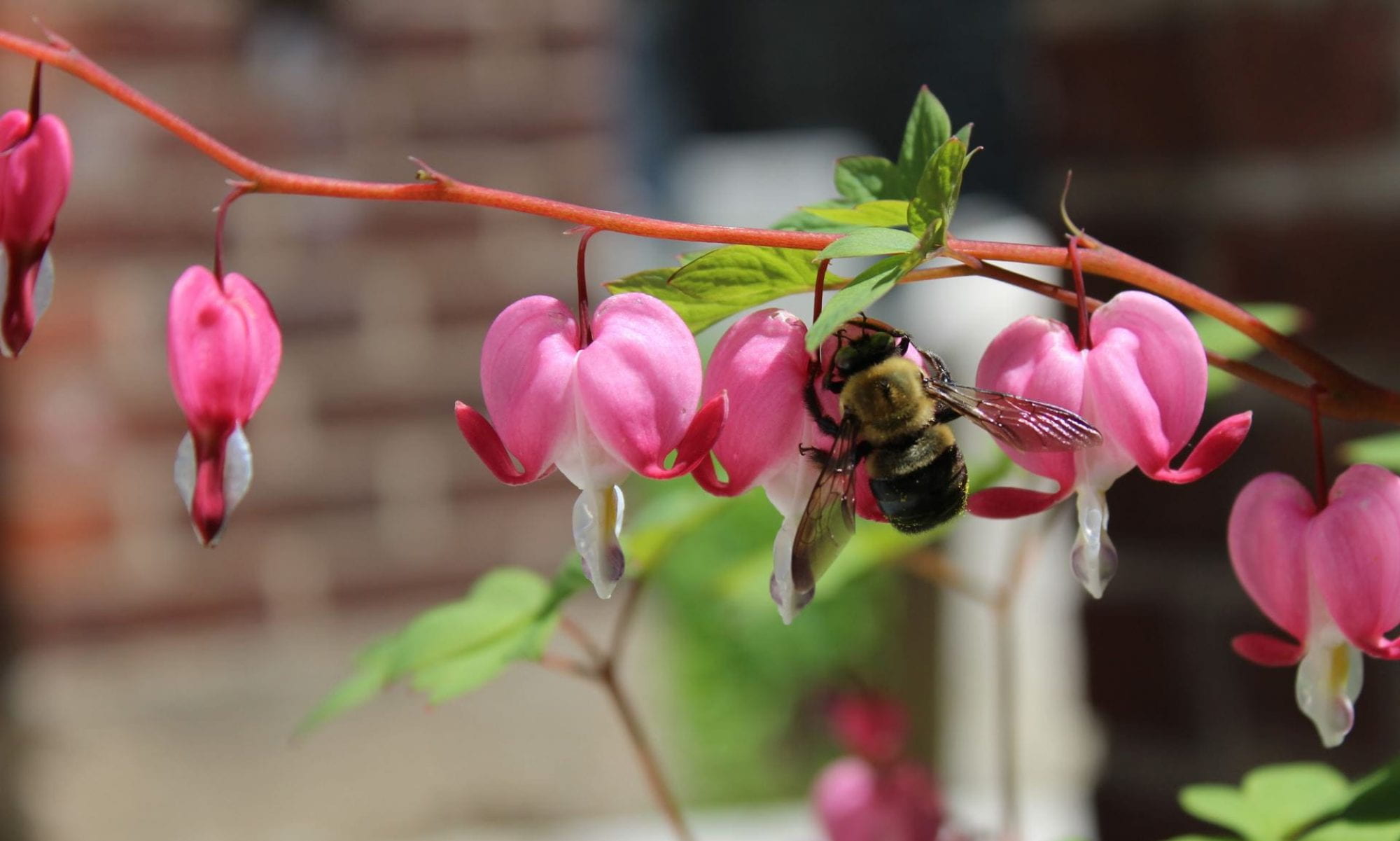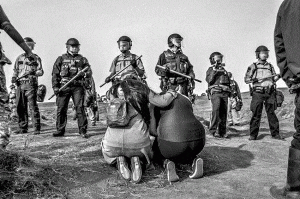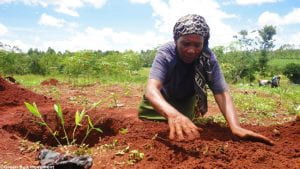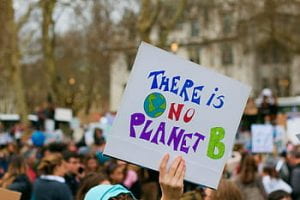Among the different activist demonstrations and raised awareness for environmental issues, such as the Chipko movement, the Standing Rock protests, and the Green Belt movement, there is very evidently a link to the oppression of women and the environment. Over decades of time and different locations around the world, women face patriarchal oppression often in the form of endangering the environment. It is important to note that in most of the articles that are going to be discussed are the accounts of the women who displayed activism and addressed their experiences with the negative impacts they faced as a result of the oppression of the environment.
This image can be seen in the video linked to the article by Sam Levin, where Caro Gonzales and another indigenous women kneel to pray in front of law enforcement before being forcefully removed from the site.
In the article by Sam Levin detailing the female-led fight in opposition of the Dakota Access Pipeline, he discusses the inhumane treatment that these women faced from law enforcement and other patriarchal establishments. The video accompanying the article shows the harrowing stories of women being abused by police, injured and threatened with arrest, and discriminated against for their protest efforts against the degradation of the indigenous lands. Indigenous women not only faced this during time of protests but also faced increased rates of sexual assault, human trafficking, and drug crimes due to the volume of male non-native oil workers staying in camps (Levin 1). It is said that women serving as water protectors were the core of the operations to fight against the pipeline, and are believed to not only be fighting for the rights of their tribes’ land and right to clean water, but for the systematic oppression in the form of racism, sexism, and abuse by law enforcement (Levin 1).
Other examples such as the Green Belt movement display how impactful women have been in activism for environmental struggles. Wangari Maarthai was the instrumental driving force in the Green Belt movement that has, since 1977, planted over fifteen million trees to benefit the environment and the crop production (Maarthai 1). It is stated that women were increasingly aware of the environmental degradation due to the fact that they are the ones responsible for the planting, tending, and harvesting of crops for sustenance (Maarthai 1). Maarthai saw that these struggles were being faced, and initiated the movement to plant trees to curb soil erosion, provide shade, and create sources of lumber so that (Maarthai 1).
When women that were close to the environment noticed it was suffering, many took action because if the environment suffers, women suffer. Indigenous youth council leader and string contributor to the resistance of the pipeline, Lauren Howland, stated that she felt the discrimination was disproportionate because they are not white (Levin 1). This stuck with me, as most of the examples addressed in this posting regard women and nations of primarily people of color. The struggles of women of color are seemingly overlooked and are further disempowered on the basis of all forms of oppression they face. Marginalized groups experience failures from systems that most other non-marginalized people are protected by, and this is why the women of Standing Rock and the Green Belt movement and other movements initiated the activism for their environmental causes.
Sources:
Halton, Mary. “Climate Change ‘Impacts Women More than Men’.” BBC News, BBC, 8 Mar. 2018, www.bbc.com/news/science-environment-43294221.
This article by Mary Halton further displayed the disproportionate rates in which women are impacted by climate change based on findings from the United Nations. Halton details how women are at risk around the world due to environmental degradation, such as the drying of Lake Chad in Central Africa, as well as natural disasters that leave women susceptible to a multitude of other issues.
Levin, Sam. “At Standing Rock, Women Lead Fight in Face of Mace, Arrests and Strip Searches.” The Guardian, Guardian News and Media, 4 Nov. 2016, www.theguardian.com/us-news/2016/nov/04/dakota-access-pipeline-protest-standing-rock-women-police-abuse.
Maarthai, Wangari. “Speak Truth to Power | The Green Belt Movement.” The Green Belt Movement, www.greenbeltmovement.org/wangari-maathai/key-speeches-and-articles/speak-truth-to-power.




Hello,
I liked that you acknowledged the struggle of women of color in relation to the environment. Like you said, the readings for this topic were based on women of color and their fight for the environment, so that alone should give us something to think about. Even though this week we focused on activism, women, and the environment, I’m glad you brought up the topic of race because race is definitely part of this week’s material. Women of color who fight for the environment have it harder than white women fighting for the environment. Of course, this is not a competition about who has it harder, but the reality is that women of color struggle more. However, all women face discrimination and fighting for the environment while fighting for gender equality at the same time is extremely challenging, but it’s necessary if we want to be free women because women and the environment are one.